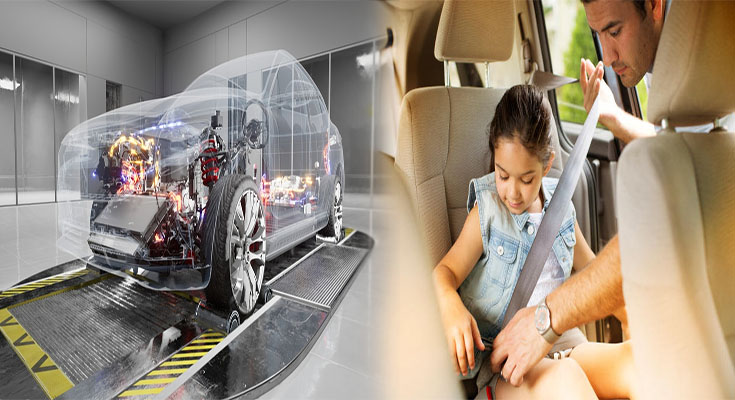With the rapid evolution of automotive technology, car safety features have made significant strides in enhancing the overall safety of vehicles and reducing the risk of accidents on the road. From advanced driver assistance systems (ADAS) to passive and active safety features, the automotive industry has witnessed remarkable advancements aimed at protecting both drivers and passengers. Let’s explore some of the recent innovations in car safety features and their contributions to creating a safer driving experience.
1. Advanced Driver Assistance Systems (ADAS):
ADAS has emerged as a game-changer in automotive safety, leveraging technology to provide drivers with enhanced awareness, collision avoidance, and adaptive capabilities. Features such as lane departure warning, adaptive cruise control, automatic emergency braking, and blind spot monitoring utilize sensors, cameras, and radar to detect potential hazards and assist drivers in avoiding collisions.
2. Adaptive Headlights and Visibility Enhancements:
Advancements in headlight technology have led to the development of adaptive headlights that adjust their beam patterns and intensity based on driving conditions, road contours, and the presence of oncoming vehicles. This improves visibility and reduces glare for both the driver and other road users, particularly in low-light or adverse weather conditions.
3. Electronic Stability Control (ESC) and Traction Control Systems:
Electronic Stability Control (ESC) and Traction Control Systems work in tandem to prevent skidding, loss of control, and oversteering or understeering situations. These systems utilize sensors to monitor a vehicle’s stability and apply individual wheel braking as needed, helping drivers maintain control during sudden maneuvers or slippery road conditions.
4. Autonomous Emergency Braking (AEB) and Pedestrian Detection:
AEB systems are designed to detect potential collisions with vehicles or pedestrians and automatically apply the brakes if the driver fails to respond in time. These systems have shown significant promise in mitigating the impact of rear-end collisions and reducing the severity of injuries in such scenarios, ultimately contributing to overall road safety.
5. Passive Safety Features:
While advancements in active safety features have garnered attention, improvements in passive safety features such as airbags, seatbelt pre-tensioners, and structural designs have also played a crucial role in protecting occupants during collisions. Modern vehicles are equipped with multi-stage airbags and advanced restraint systems that are designed to minimize the risk of injury in the event of a crash.
6. Vehicle-to-Everything (V2X) Communication:
V2X communication enables vehicles to exchange information with other vehicles, infrastructure, and pedestrians, allowing for real-time awareness of potential hazards, traffic conditions, and emergency situations. This interconnectedness enhances situational awareness and can lead to proactive accident prevention and improved traffic flow.
As car safety features continue to advance, automotive manufacturers and technology developers are constantly pushing the boundaries of innovation to further enhance the safety of vehicles and reduce the likelihood of accidents on the road. These advancements not only aim to protect drivers and passengers but also contribute to the broader goal of creating a more secure and efficient transportation ecosystem.
The continual evolution of car safety features underscores the industry’s commitment to prioritizing safety as a fundamental aspect of vehicle design and technology. As these features become more widespread and sophisticated, drivers can look forward to a future where the risk of accidents is significantly minimized, ultimately leading to safer roads for everyone.













